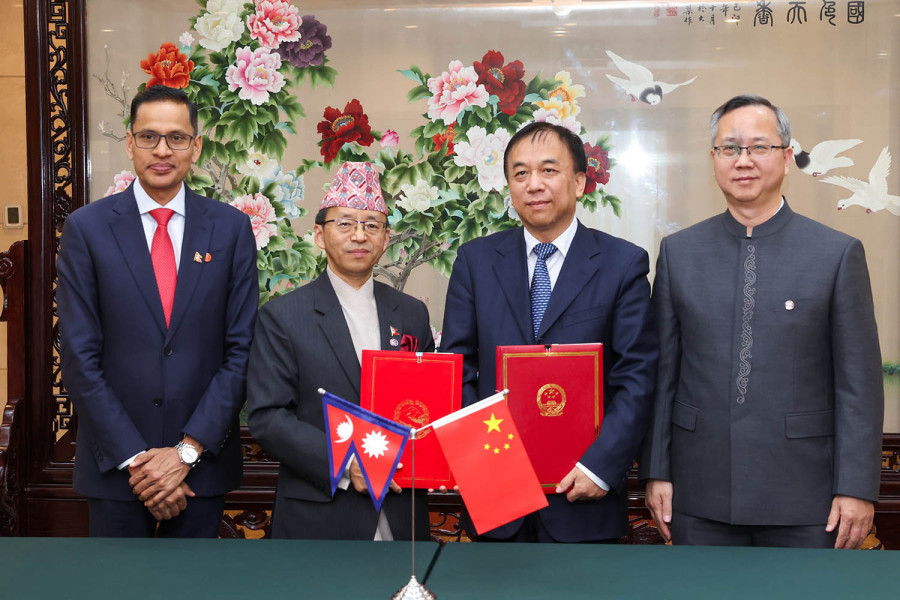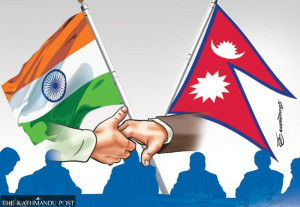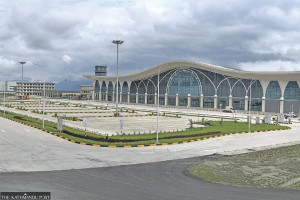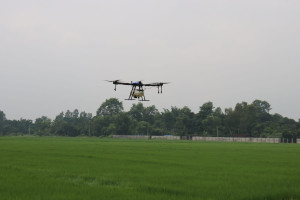Columns
Why BRI matters to Nepal
For Nepal, joining the BRI is not about one-sided dependency but about leveraging cooperation.
Chen Song
During Rt. Hon. Prime Minister KP Sharma Oli’s visit to China in 2024, China and Nepal signed the framework agreement on Belt and Road Initiative (BRI) cooperation, marking a new phase of high-quality BRI collaboration between the two countries. Many Nepali friends asked me: “The BRI is a grand vision, what does it truly mean for Nepal? What tangible benefits can it bring to Nepali people?” It’s time to address these questions: Embracing the BRI is not merely about gaining a road, port, or airport—it’s about integrating into a global network of future development that combines connectivity, technological advancements and industrial innovation.
Joining the global trade and connectivity network
China’s decades-long commitment to infrastructure development has built a world-leading transportation and trade network, laying a solid physical foundation for the BRI. By 2024, China’s high-speed railway mileage reached 48,000 kilometres, accounting for over 60 percent of the global total. Its highway network spans 177,000 kilometres, the largest in the world, and seven of the top 10 global ports by cargo volume are located in China. These achievements not only serve China’s domestic economy but also benefit BRI partner countries through cross-border projects.
Geographical barriers and inadequate infrastructure have long constrained Nepal. However, the gradual formation of the Trans-Himalayan Multi-Dimensional Connectivity Network is transforming Nepal from a “landlocked” country to a “land-linked” country. Land ports, traditional trading points, highways, air routes, cross-border power grids, etc., between the two countries will significantly reduce Nepal’s connectivity costs and boost exports and tourism.
Meanwhile, China’s role as a global trade hub continues to grow, with its 2024 foreign trade volume hitting $6.54 trillion and the largest trading partner of more than 150 countries and regions. This “hub effect” spreads through the BRI network, offering Nepal and other nations a shortcut to integrate into global supply chains.
Accessing cutting-edge technologies and industrial transformation
China’s breakthroughs in frontier technologies are injecting new momentum into global industrial transformation. In green energy, China produces 60 percent of the world’s electric vehicles (EVs), while companies like BYD and CATL dominate 70 percent of the global EV battery market. These advancements not only accelerate the automotive industry’s shift toward low-carbon solutions but also enable developing nations, through BRI cooperation, to leapfrog traditional fossil fuel stages and directly adopt renewable energy infrastructure.
In cutting-edge fields, China’s quantum computer “Zu Chongzhi 3.0” achieved 105-qubit operations. Lunar exploration missions, such as Chang’e-6, successfully retrieved samples from the moon’s far side and detected water molecules in lunar soil—paving the way for the first moon base. China’s Tiangong Space Station has already transformed into the regular operation stage, and it will select Pakistani astronauts to enter the Station to perform missions in the coming few years according to the agreement signed between China and Pakistan.
Such technological milestones, shared through joint BRI research and technology transfers, become innovation assets for partner countries. For instance, China’s leadership in 5G and 6G patents (holding 40.8 percent and 35 percent of global filings, respectively) is helping BRI nations bridge the “digital divide” by building advanced telecommunications infrastructure.
Building sustainable knowledge networks
The rise of China’s technological capabilities stems from deep collaboration among education, research and industry. In 2024, China’s R&D investment reached $458 billion, accounting for 2.6 percent of GDP. With over 5 million engineering graduates every year, the country ensures a steady talent pipeline for innovation. Universities, enterprises, and research institutions have formed an integrated “Knowledge-to-Productivity” model, accelerating the commercialisation of technologies. China’s 4,000+ AI companies work closely with universities to apply artificial intelligence in healthcare, smart transportation, and other sectors, enhancing societal efficiency. For example, Deepseek and Unitree Robotics hit the headlines in the tech world for their leading innovative achievements in AI and robotics.
This innovation ecosystem extends globally through the BRI Educational cooperation programmes between China and Nepal—such as scholarship initiatives and joint laboratory projects in fields like healthcare—are cultivating localised technical talent. Additionally, China’s leading position in the “Nature Index” (ranked first globally for five consecutive years by 2024) and its high citation rates for academic papers provide partner countries with platforms for knowledge exchange. Such “intellectual networks” empower developing nations not only with funding and equipment but also with the capacity for self-driven innovation.
At its core, the BRI aims to create a global development network integrating infrastructure, technology, and knowledge. By reducing physical barriers through connectivity projects, offering transformative tools through technological breakthroughs and fostering innovation through collaborative ecosystems, China is reshaping opportunities for partner nations. For Nepal, joining the BRI is not about one-sided dependency but about leveraging mutual cooperation to align its unique resources with global networks—transitioning from a “survival economy” to sustainable development.
As China has consistently emphasised, the BRI is not an isolated path but a web of shared future. It rejects zero-sum competition, prioritising unconditional collaboration for collective progress. To embrace this network is to embrace a more inclusive, innovative and sustainable development future.




 14.12°C Kathmandu
14.12°C Kathmandu















